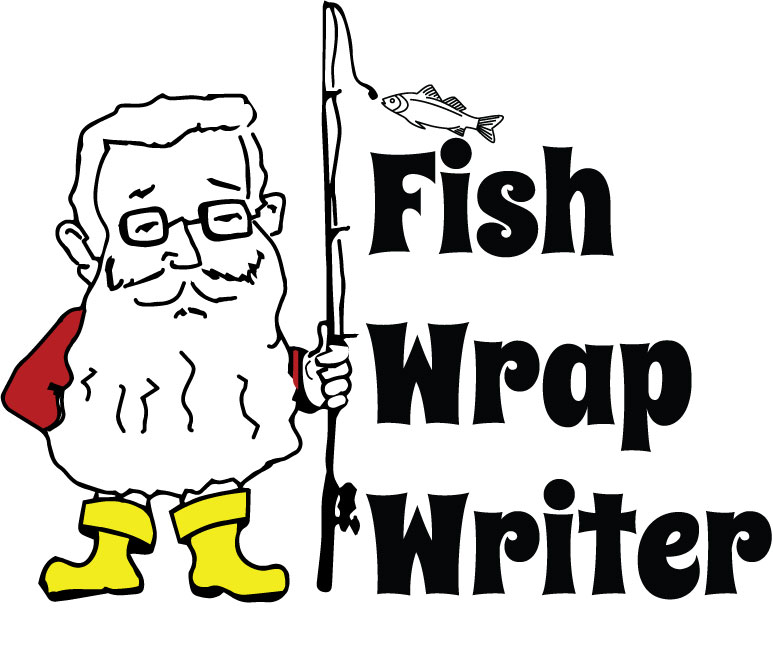After a several long, strong snow storms, our roads are again blotched black and dirty, roads are getting narrow, salt cakes everything. For those well-traveled paths, this is a ragged time of year. As snows continue to cycle through our region, legions of mailboxes not already decapitated, balance precariously on crooked posts, pointing in all compasses points, sticking out their tongues. For the unscathed, positioned on long roads, this is the time for getting affairs in order. Indoors, hands made idle from cancelled outside chores, look to position rods reels and battered lures on walls, overhead and on shelves, all in the name of high-season accessibility and even art. Woodstoves, cursed for their hunger, blessed for their heat in return, blaze around the clock.
The salt which clings to our cars while obscuring its colors mainly comes from its being used as road deicers. Sprayed on freezing streets, they get underneath the ice layer then lower water’s freezing point to start the melting process. This creates a brine of sorts, which floats under the ice and cars help migrate it to the roadside but then it is the sodium and chloride ions which get flushed into our waters. For years these chemicals have been studied for their effects on nearby ground waters and fishes, which is important for us since we have many streams and ponds alongside our roads. Oftentimes, the small brook many speed by eventually feeds another which then becomes the head waters for larger rivers or ponds, the very same places we fish and swim and from where water is drawn.
The first recorded use of salt as a deicer on roads was in 1938 in New Hampshire. According to the Maryland Department of Natural Resources, nationally we now use 10 to20 million tons per year. As of 2013, the RI State Department of Transportation was spending approximately ten million dollars per year to salt our roads and just last winter used about 130,000 tons of salt on state maintained roads. Typically, road salt is sodium chloride, calcium chloride or occasionally, the more expensive and often slippery magnesium chloride, all with a dose of anti-caking agent mixed in. It is those chloride ions, matched to their sodium brothers, which split off when exposed to water, migrate to neighboring waters and accumulate with no known natural processes to eliminate them.
Salt damage to soils and plants can be found as much as 60 feet from the road and even farther after post-snow rain events. When the soils become burned from salt exposure, invasive salt-tolerant species like Japanese knotweed can take over. Come springtime, all that sand and salt has to go somewhere. According to the Rhode Island Department of Administration’s Division of Planning, only about five to ten percent of sand applied to roads is recovered each year. The practice of wetting salts before application, which limits the amount of crystals which bounce off the road and onto the shoulder, can reduce overall usage by twenty per cent but so far does not appear in regular use in our state.
While salt can at some level at least be dissolved or be flushed downstream to dissipate, it is the sand and chloride which does the most damage. Sand can fill catch basins, increasing opportunity for localized road flooding and transportation of pollutants. Sand can also load up in those small vernal pools where invertebrates breed and later undergo metamorphosis into adults. Burying suitable locations for laying eggs with a layer of fine sand can reduce populations and considering how we are taking up almost everything inch of everywhere, losing even a few small pools throws nature’s population plans out of balance. As for the chloride side of the equation, research at URI has shown a 40% reduction in survival for our native spotted salamander, Ambystoma maculate, when spawned in waters with chloride concentrations exceeding 162ppm. Normal freshwater concentrations should be between 1 and 100 ppm; seawater is naturally around 35,000 ppm. A study conducted by Daren Carlisle and Michael Meador at the National Water-Quality Assessment Program found that some species of brook trout, which we can find in several of our local waters, have a chloride tolerance as low as 3.1ppm. Unfortunately, chlorides also seem to negatively affect some small plankton sized crustaceans which are consumed by fish and amphibians and help to reduce algae blooms. What a mess. There are safer alternatives to standard road salts but the details are a stretch from the focus of a fishing column.
One unwelcome plant which seems to handle increased chloride and salt levels is didymo, more commonly known as rock snot and well known to fresh water anglers. Found largely in cold water streams lakes and rivers, it forms a sticky gelatinous carpet on the bottom, often altering the distribution of microinvertebrates, like midges and nymphs. This shift in food can negatively affect the ponds natural balance. After the 2009 publication “On the Boots of Fishermen: The History of Didymo Blooms on Vancouver Island, British Columbia”, many states, including our own, banned the use of felt soles in the fear they could be a host to the plant and be carried off alive to other water bodies.
RIDEM prohibits them in state waters and waters which are shared with our neighbor states. Some states have since backed off the felt ban because almost anything which comes into contact with didymo waters can be a host so it is critical that items get thoroughly cleaned as well, even sterilized where practical, once out of the water.
While once thought to be an invasive diatom, research now points to it being established in this country for thousands of years, possibly pre-dating man’s arrival. A three-year study of brook trout found that growth decreased by forty-four per cent in didymo waters, possibly due to the change in available foods. Now there is research into a connection between the presence of didymo and whirling disease, which any trout fisherman will tell you, is devastating to juvenile trout populations.
With winter full on here, towns are working hard to keep the roads safe while the university crowd works on determining just how much damage we may be doing to our soils grasses frogs and fishes. Underneath all that ice and snow are the fishes we love to chase, like the brook trout, which can tell us so much about the state of our natural condition and how we are affecting its balance.





0 Comments